How many of us have practiced suture removal in occupational or physical therapy school?? NOT I!!
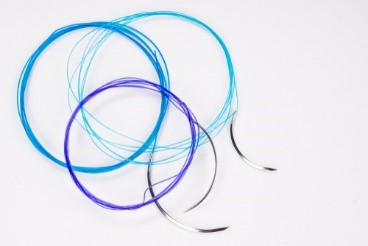
Often, hand surgeons will ask the therapist to remove sutures and sometimes the order will even say “remove sutures when ready”
SO NOW WHAT? How to remove continuous sutures? First, we can cover the basics of sutures!
There are two basic classifications for suture material, absorbable and non-absorbable. Absorbable sutures typically do not require manual removal, because the enzymes that live in the body’s tissue will digest them. Non-absorbable require a healthcare practitioner to remove them however sometimes they can be left in permanently for example sutures placed in tendons are typically never removed.
You may encounter patients with different types of sutures, or a different technique was utilized to place them.
The most common types of suture techniques you will see in the hand therapy setting is the interrupted suture techniques followed by the continuous sutures.
Interrupted Sutures:
After a stitch is made the material is cut and tied together. After this another stitch is placed and again cut and tied together, this step is typically repeated until the wound is closed. This technique usually takes a little longer than the continuous suture removal technique.

Continuous Sutures:
A series of stitches that use one single strand. This allows the tension to be distributed evenly. These are typically very easy to remove and can be placed quickly.
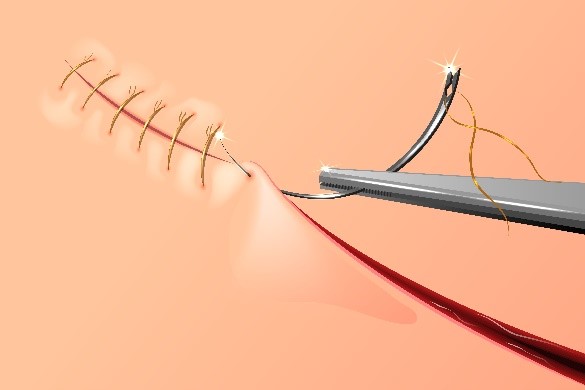
Buried Sutures: This is when the knot of the suture is found within the tissue. This suture is typically not removed.
Deep Sutures: These are placed in the layers of the skin and deeper tissues. These are either continuous or interrupted. Typically, these are used to close fascial layers.
Now for the Million Dollar Question? When should the sutures be removed?
This often will vary form patient to patient and may be dependent on how well the wound is healing. If the patient is diabetic and demonstrating poor wound healing or poor wound closure you may be inclined to leave the sutures in place a little longer compared the young kid whose incision is healing very well.
Guidelines for Suture Removal
Arms 7-10 days
Dorsal aspect of the Hand 10-14 days
Palms of Hand 14-21 days
When removing the sutures make sure you use a sterile suture removal kit. Pick up one end the suture and cut it, trying to stay as close to the skin as possible. After it is cut slowly pull the suture strand.
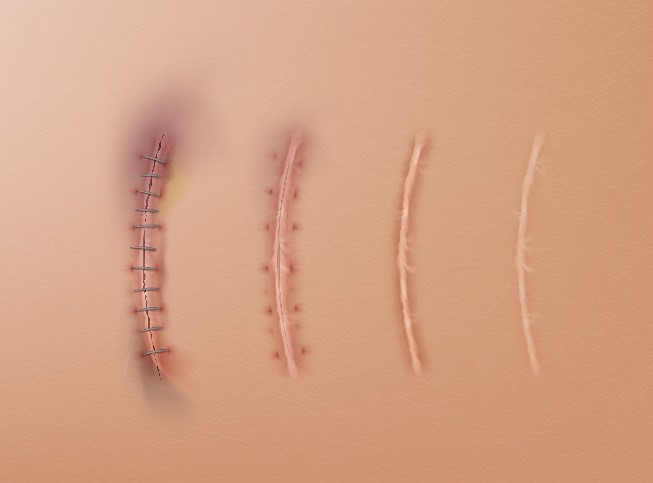
1 Comment
Leave a Comment
More To Read
Management of the Stiff Finger: Evidence and Outcomes
Title: Management of the Stiff Finger: Evidence and Outcomes Reference: Yang, G., McGlinn, E. P., & Chung, K. C. (2014). Management of the stiff finger: Evidence and outcomes. Clinics in Plastic Surgery, 41(3), 501–512. https://doi.org/10.1016/j.cps.2014.03.011 Article Review By: Tommi Hintnaus The Skinny: This study focuses on understanding and managing finger stiffness, a condition characterized by…
Read MoreCyclist Injuries: Avoiding Hand Injuries and Treatment Strategies
RAPID REVIEW Chiaramonte, R., Pavone, P., Musumeci, G., Di Rosa, M., & Vecchio, M. (2022). Preventive strategies, exercises, and rehabilitation of hand neuropathy in cyclists: A systematic review. Journal of Hand Therapy, 35, 164-173. The Skinny: The study was a systematic review done to get clarification on the diagnostic process for cyclist injury specifically for…
Read MoreIntrinsic Hand Strengthening with Puttycise Tools
We are always looking for ways of the intrinsic hand strengthening. It is easy to overlook the importance of these small but mighty muscles. They are essential to performing functional grasps patterns. They can become weak in a short period of time due to their small size. So, How does intrinsic strengthening work?! The Basics…
Read MoreSensory Processing in People With and Without Tendinopathy
Emilee Sanders, OTS Sensory Processing in People With and Without Tendinopathy: A Systematic Review With Meta-analysis of Local, Regional, and Remote Sites in Upper- and Lower-Limb Conditions Rio, E, Sandler, J., Cheng, K., Moseley, G. L., Cook, J., & Girdwood, M. (2021) Sensory processing in people with and without tendinopathy: A systematic review with meta-analysis…
Read MoreSign-up to Get Updates Straight to Your Inbox!
Sign up with us and we will send you regular blog posts on everything hand therapy, notices every time we upload new videos and tutorials, along with handout, protocols, and other useful information.


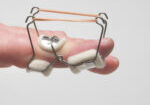

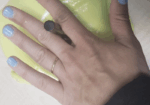


Yourwebhoster.eu